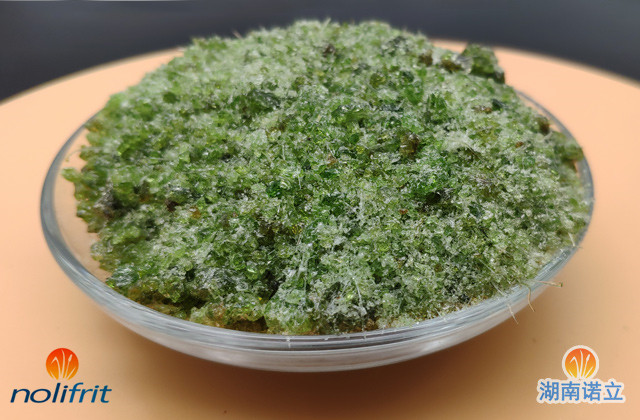Physical And Chemical Properties of Enamel Frit
Enamel frit usually refers to unground frit, which is a kind of borosilicate material. Porcelain glaze is similar to glass. It is an amorphous solid with long-range and short-range order of atoms. The atoms are not arranged in a long-range order in space like crystals, but are similar to liquids in short-range order. The formula and melting process of enamel glaze are similar to ordinary glass, and the main components are glass phase and a small amount of crystals, such as titanium dioxide, zirconium dioxide and antimony oxide. The structure of enamel glaze can be described by reference to the structure of glass. The main difference between the chemical composition of enamel glaze and glass is that the content of silicon dioxide is lower than that of glass, and the content of spinel-type oxide is relatively high. Enamel glaze has the following five characteristics.

Isotropic
The particle arrangement of enamel glaze is generally irregular and statistically uniform. Therefore, when there is no internal stress in the enamel glaze, its physical properties (such as hardness, elastic modulus, thermal expansion coefficient, thermal conductivity, refraction) Rate, conductivity, etc.) are the same in all directions.
No fixed melting point
The transformation of enamel glaze from solid to liquid is carried out within a certain temperature range (softening temperature range). Unlike crystalline substances, enamel glazes have no definite melting point.
Metastability
The enamel glaze is obtained by cooling the melt. During the cooling process, the viscosity increases sharply, and the particles are too late to be arranged regularly, and the latent heat of crystallization (solidification heat) is not released. Therefore, the enamel glaze contains higher energy than the corresponding crystalline substance. It is not from the stable state with the lowest energy, but belongs to the metastable state. Although the enamel glaze is in a higher energy state, because of the high viscosity at room temperature, the rate of transformation into crystals is extremely low, so it cannot be transformed into crystals spontaneously (kinetic factor). Only under certain external conditions, that is, must overcome the potential barrier of the substance from the enamel glaze to the crystalline state, can the enamel glaze crystallize. Therefore, from a thermodynamic point of view, enamel glaze is unstable; but from a dynamic point of view, it is stable.
Continuity of changes in thermodynamic properties
During the cooling (or heating) process of the enamel glaze from the molten state, its physical properties change gradually and continuously, and it is reversible.
Continuity of changes in physical properties
The properties of enamel glaze (within a certain range) change continuously with the chemical composition. Most of the physical and chemical properties of enamel depend on the chemical composition of the enamel glaze to a certain extent. In addition, the quality of the raw materials used in the manufacturing process of the enamel glaze, the process operation and the physical and chemical properties of the enamel glaze are also closely related.
In the production of enamel products, it is necessary to grind enamel, clay and other grinding materials into a slurry together. Before enamelling, it is often necessary to add other substances (electrolytes, etc.), and after mixing, can it be adapted to enamel and firing.